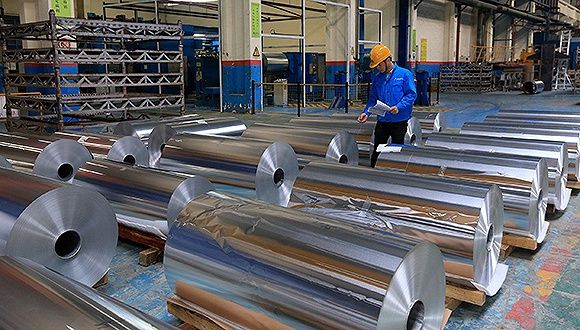Aluminum foil is a thin sheet of metal aluminum that is directly rolled into a stamping material. It has a similar stamping effect as pure silver foil, so it is also called fake silver foil. Because of its excellent characteristics, aluminum foil is widely used in food, beverages, cigarettes, pharmaceuticals, photographic plates, household daily necessities, etc., usually as its packaging material; electrolytic capacitor materials; insulation materials for buildings, vehicles, ships, houses, etc.; it can also be used as decorative gold and silver lines, wallpapers and various stationery printing products and light industrial products decoration trademarks, etc.

Electrolytic aluminum is added with alloy elements and processed into aluminum foil by extrusion, drawing and other forms. It is widely used in packaging, air conditioning, electronics and other fields. According to the statistics of China Nonferrous Metals Processing Industry Association and Beijing Antaike Information Co., Ltd., China’s aluminum foil production reached 4.15 million tons in 2020, with a finished product rate of 88%, ranking first in the world. Among them, battery foil increased by 16.7% year-on-year, mainly driven by the demand for automotive batteries.
Battery foil is a kind of high-tech product, which has a compound annual growth rate of more than 15% in the next few years. Battery foil is used to make various parts of batteries, while electrical foil is used to make various parts of other electrical appliances. They can also be collectively referred to as electronic foil. Battery foil is divided into two types: flat foil, which has high strength, high conductivity and flatness; and surface modified foil, which has high strength, high conductivity and surface roughness. The surface roughness can improve the adhesion of active materials and reduce the amount of binder, thus improving the battery performance.

Aluminum foil has many advantages as a packaging material, such as light weight, good barrier properties, recyclability, hygiene and safety. With the implementation of the national plastic ban in 2020 and the deepening of the concept of green consumption, aluminum foil packaging has a great potential. In addition, aluminum foil also has good thermal conductivity, insulation, reflectivity and electrical conductivity, which can be applied to various technical products.
In summary, aluminum foil is a versatile and effective material that can create new “blue oceans” for applications in various fields. It is expected that the demand for aluminum foil will continue to grow in the future with the development of economy and technology.
